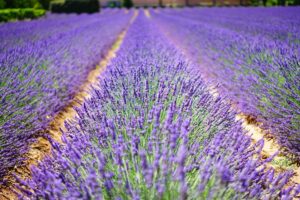
Understanding botany is useful in plant propagation
By Clive Larkman
Most of my articles have focused on different varieties of edible and household herbs, and occasionally on industry events or happenings. However, I haven’t touched on the actual botany of the plants I’ve written about, when in fact this is an area of great interest to me, particularly how plants evolved and why they grow where they do. This interest inspired me to undertake studies in the mid-eighties and I completed a degree in botany and zoology, majoring in physiology and evolution. So, I thought I might touch on botany in this article.
Basically, plants are able to grow in areas of adverse conditions if they can adapt to grow there better than other plants. A classic example is Lavandula angustifolia which has evolved to grow on pure gypsum ‘gravel’ which has a pH in the high eights. For years, the assumption was that these plants ‘prefer’ a high pH when botanically we know this was never the case. All plants prefer a pH range of 6.8 to 7.3 if they get the right balance of light, nutrients and water in their native climate. In the case of Lavender, if they have hot dry summers, cold wet winters, well-drained soil and excess calcium, they will do well.
What we must accept is that a plant has two objectives. The first is to grow to its ideal size whilst maintaining good vigour. Then, when it gets to maturity it must flower, pollinate and produce progeny in the form of germinated seedlings. If it gets stressed and is facing death, it must quickly produce healthy progeny. This is why most plants flower and fruit better under stress than in ideal growing conditions. It is by understanding the climatic and environmental conditions that generate good flowering, and also those that give optimum growth, that allows us to get the best out of our plants. In many cases, what we want or desire in the plant is not necessarily what the plant wants.
There are so many conditions that affect how a plant grows that it is surprising we are able to get it right so often. The three basics are food (i.e., chemical nutrients), water and light. There are many other agents that will affect growth but none of them are the basic needs. Over the next few issues, I want to address some of the governing principles.
Light is a primary requirement that appears to be the simplest. We think that all a plant needs is a certain level of light to grow. In one sense this is so but in reality, it is complex and affects a plant in different ways. To start with, the light required for growth is different from that required to fruit and/or grow well. There are also a range of criteria that tells a plant when to grow, fruit, seed, go dormant etc. Daylength is important in that it can control so many aspects of plant growth. There are many plants that do different things at different times of the year.
As plants don’t grow with calendars, watches or any other form of timekeeping, they must rely on something else. It is not the season that they grow by, but the conditions that come with each local season. What a plant wants is for its seed to drop at a time when local conditions are best suited to seed germination. The base test is day length and what is happening to it and some plants respond to a set number of hours between sunrise and sunset, which is the day length.
For many plants, it is the change in day length that are important. The options are definitive and quite different. They are:
- Increasing day length. This is the period between the winter and summer solstice, normally mid-winter to early summer in Australia.
- Decreasing day length. This is the other six months from the summer solstice to the winter solstice.
- Equal daylengths. The period is immediately around the autumn and spring equinoxes. These times are often associated with flowering and fruit ripening.
- Longest day/shortest day. Certain plants undertake specific growth periods on and around these days.
- Actual Daylength. Some plants respond by flowering, setting fruit etc. when certain numbers of hours of daylight are achieved.
Then there are other plants, like lavender, that respond to the actual volume of light. They need a certain number of hours per day over a set period to initiate a growth response. Other plants need a certain number of units of light. Then there are plants that will happily grow at a set light level of x lux but if that changes by more than a certain percent, they will defoliate. This can then cause the plant to put on flowers, spring foliage or even autumn foliage.
Plant growth is quite complex and light is only one set of growing criteria. The only way to understand growth criteria and how they affect specific plant growth is to watch, learn and then relate it to the natural environment of where the plant grows. The whole issue of light is complex and must be looked at in conjunction with how the plant responds to light/dark and what are the natural occurrences where the plant evolved.
